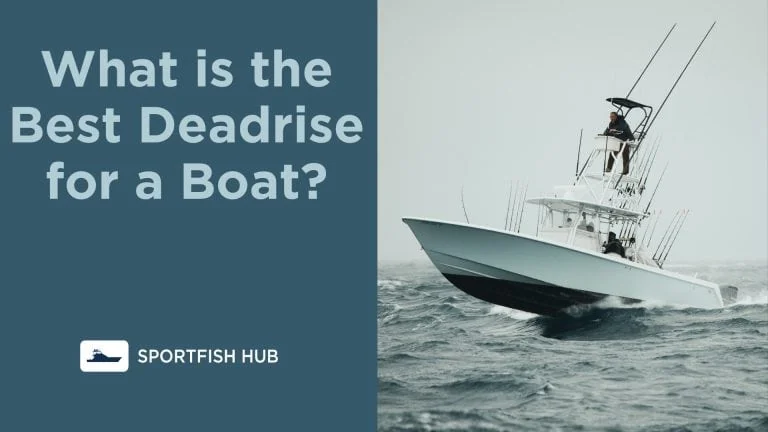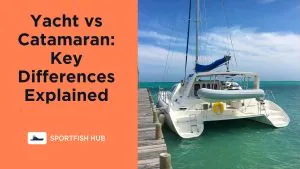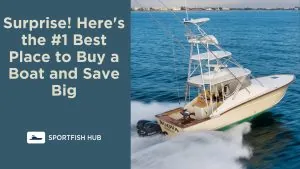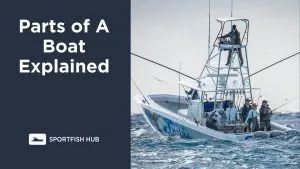Deadrise is an important factor to consider when choosing a boat hull. But what exactly is deadrise, and what is the optimal amount for different boating needs? This guide will explain deadrise and help you determine the best deadrise for your boat.
You might also be interested in our Best Boat For Rough Seas article.
What is Deadrise on a Boat?
Deadrise refers to the angle between the bottom of the boat hull and the horizontal plane. It is measured in degrees.
- A flat bottom boat has 0 degrees of deadrise
- Jon boats often have 8-10 degrees of deadrise
- Bay boats may have 12-16 degrees of deadrise
- Offshore fishing boats can have over 20 degrees of deadrise
Deadrise is usually measured at the transom (back) of the boat, since this is the running surface when up on plane. However, deadrise at the bow and midsection are also important. Measuring deadrise at multiple points along the hull can give you a better understanding of the overall hull shape and how it transitions from sharp at the bow to flatter at the stern.
Why Deadrise Matters
The amount of deadrise affects:
- Ride comfort – More deadrise helps slice through waves for a smoother ride. The V shape dissipates the energy from waves incrementally rather than all at once.
- Stability – Less deadrise increases stability at rest. Flat bottomed boats stand upright easily when stationary.
- Speed – More deadrise requires more power to plane out. The V shape creates more drag and less lift.
- Fuel economy – More deadrise decreases fuel efficiency. The increased drag and power required reduces miles per gallon.
- Draft – More deadrise increases draft. The V shape brings the keel lower below the water surface.
There are tradeoffs, so finding the right balance is key. Different hull designs aim to strike an optimal blend based on the boat’s intended use.
Good Deadrise by Boat Type
The optimal deadrise depends on the type of boating you do. Here are some common boat types and their typical deadrise needs:
Flats and Bass Boats
- Deadrise: 0-10 degrees
- Benefits: Shallow draft, stability, fuel efficiency
Flats boats need to run in very shallow water and be stable at rest for casting. Minimal deadrise allows them to float and run in just inches of water. Their flat bottoms plane easily and provide maximum interior space.
Bay and Multi-Species Boats
- Deadrise: 12-18 degrees
- Benefits: Blend of ride comfort, stability, and efficiency
The moderate deadrise of bay boats provides a good combination of ride comfort and stability for nearshore fishing. They bridge the gap between shallow water performance and offshore abilities.
Offshore Fishing Boats
- Deadrise: 20+ degrees
- Benefits: Smooth ride in rough seas
Deep deadrise allows offshore boats to slice through waves smoothly at high speeds offshore. While they require more power to plane, their ability to handle rough water makes them ideal for blue water fishing.
Cruisers and Trawlers
- Deadrise: 10-14 degrees
- Benefits: Efficiency, space, stability
These slower displacement boats do not plane much, so extreme deadrise is not needed. Low deadrise maximizes internal space and fuel economy. Their more flat-bottomed hulls also provide stability at anchor.
Key Considerations
While deadrise is important, other factors like hull shape, weight, beam, and trim tabs also affect ride and performance. Narrower, heavier boats generally ride better. Multi-stepped hulls add lift to reduce pounding.
Take any boat on a sea trial to judge the ride comfort for yourself. Pay attention to how it handles rough seas at different speeds compared to other boats.
Finding the right blend of deadrise, beam, and hull shape for your needs is key to choosing the optimal boat. Discuss your specific boating application with a dealer to match the right hull design.
More Deadrise Insights
Here are some additional insights on deadrise and hull design:
- Sharp bow entries with 50+ degrees of deadrise are common to split waves, but midship deadrise matters more for ride
- Too much deadrise aft can make boats roll excessively at rest
- Wider beams need more deadrise to avoid pounding
- Variable deadrise tapers from sharp at bow to moderate at stern
- Steps and strakes can increase lift and reduce slamming on deep V hulls
- Weight placement affects impact forces, keep weight low and centered
- Resting stability also depends on weight distribution and center of gravity
Do your research and thoroughly understand deadrise for your boat type. Consult with an expert if unsure about the optimal design. Properly matching hull shape to your boating application is worth the effort.













